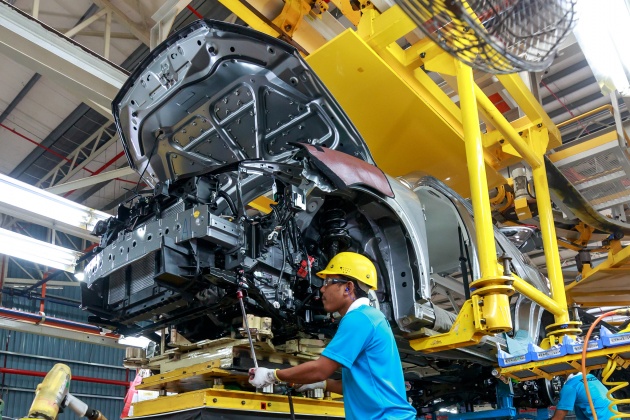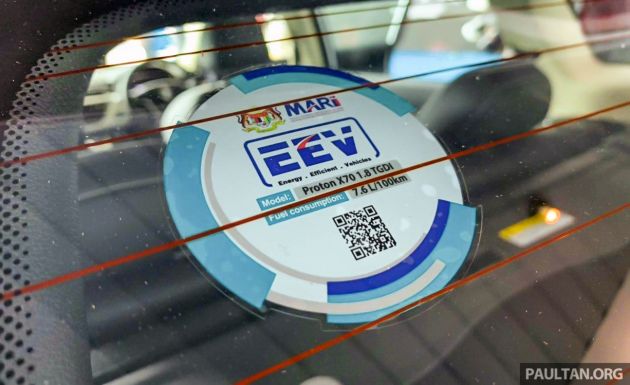According to Mohd Shamsor Mohd Zain, who is the president of the Malaysian Automotive Association (MAA), the local automotive industry will shift from Customised Incentives (CI) to a fixed, more transparent and fairer tax system in October this year.
At a press conference yesterday, Shamsor was asked when incentives given to attract car companies to invest in Malaysia would be revised, to which he replied: “I think we’ve discussed about this. It’s going to be fixed. It would be much more transparent in terms of the application of the calculation and so on.”
“As I understand, maybe in the end of the third quarter, October. Hopefully it will materialise in October; it will give a more transparent, fairer way of calculation for the whole industry,” he continued. Shamsor also mentioned NCM (New Customised Incentive Mechanism), which is part of the New Industrial Master Plan 2030 (NIMP 2030) put forth by the ministry of investment, trade and industry (MITI).
At present, little is known about the NCM, although there are tidbits of information after scouring the internet for a bit. In a written reply to a question from Datuk Indera Mohd Shahar that was posed to parliament (dated May 25, 2023), in which he asked what measures are being taken to prevent the Industrial Linkage Programme (ILP) mechanism from being manipulated, it was mentioned the NCM would be “menu-based” to promote a more transparent and competitive business environment.
“This mechanism encompasses various aspects that are in line with the aspirations of NAP 2020 (National Automotive Policy 2020) such as investment, localisation, exports, carbon emissions, vendor development, manufacturing of critical components, application of 4.0 technology, engineering levels and R&D so that the automotive industry can develop holistically,” the reply read.
“Under the NCM, the emphasis on effective localisation value, which is the actual localisation value in calculating tax incentive eligibility, is seen as being able to reduce the possibility of manipulation. This approach can also encourage OEMs to expand localisation activities at the local vendor level and thereby increase the ability of local suppliers to produce higher-value components,” it continued.
There is also the MITI Dialogue, an annual programme that provides a platform to convey the policies and focus of the ministry in the immediate term to enhance investment and international trade performance. At the same time, the programme also serves to address issues related to the industry while also gathering important feedback from relevant associations.
In the 2024 programme book (the event was held on January 29 that year) obtained from the Malaysia Business Group, an issue raised by the MAA was that the current hybrid electric vehicle (HEV) incentive does not differentiate HEV, which is similar to battery electric vehicle (BEV).
“Under current tax incentives mechanism, the indirect tax incentives that are offered by the government for hybrid electric vehicles (HEV) is special compared to internal combustion engine (ICE) vehicles. For EV (full electric), further and extensive incentives are considered in order to promote the development of this new technology in the local automotive ecosystem,” MITI replied.
The ministry went on to say that a tiered structure has already been provided in the NCM framework. “In the proposed New Customised Incentive Mechanism (NCM), the incentive for hybrid electric vehicle is differentiated by the amount of bonus given,” it noted. The bonuses listed out are:
- Mild hybrid: 45% (until 2027) and 20% (2028 to 2030)
- Full hybrid: 50% (until 2027) and 25% (2028 to 2030)
At present, Customised Incentives serve to attract investments into Malaysia, specifically in Energy Efficient Vehicle (EEV) and Next Generation Vehicle (NxGV) sectors. The amount and type of incentives depend on a company’s level of strategic activities, such as completely knocked down (CKD) investments, production volume, technology transfer, R&D activities, supply chain development, employment, export programs and other factors.
Put simply, it isn’t fixed and can vary from company to company. The amount of incentive given is subject to a cost-benefit analysis (CBA) and the recommendation of the Automotive Business Development Committee (ABDC). The latter is a strategic committee chaired by MITI as well as representatives from the ministry of finance (MoF), Royal Malaysian Customs Department (RMCD), Malaysia Automotive Robotics and IoT Institute (MARii) and Malaysian Investment Development Authority (MIDA).
At MITI Dialogue 2024, the MAA also raised the issue of a long-term incentive framework to spur the xEV (hybrid and EV) ecosystem, to which MITI replied: “In alignment with the National Automotive Policy 2020, the government, as outlined in the 2022, 2023 and 2024 budget, continue to provide tax incentives while extending the timeline of tax incentives to encourage the assembly or manufacturing of domestic electric vehicle. The existing tax incentives are sufficient to boost the EV penetration.”
“Furthermore, it is a common practice for the government to grant tax incentives, typically spanning a period of five years or more. However, in line with a systematic approach to periodically assess their efficacy, each tax incentive announcement includes a designated sunset period,” it continued.
“This structured evaluation process ensures a thorough examination of the impact and benefits derived from the incentives. By incorporating sunset periods, the government can strategically review and, if necessary, adjust the tax incentive landscape to align with evolving economic conditions and policy objectives,” it ended, adding that the proposal needs further review.
Looking to sell your car? Sell it with Carro.

















Notwithstanding all the legal and commercial jargon, ultimately, will hybrids, PHEV, and EVs be lower in price for the buyers?
of course must be transparent … incentive masuk kocek siapa pun tak tau
end of day. only make few ppl rich.
Usual BS from the government. Why car tax can be fair but not GST? Please bring back GST so that everyone pays their fair share of tax